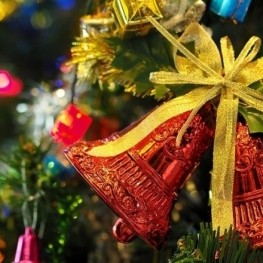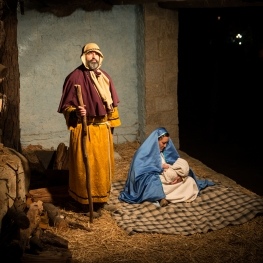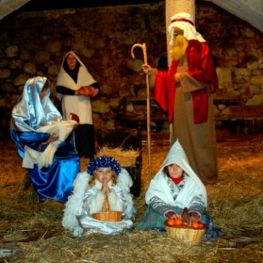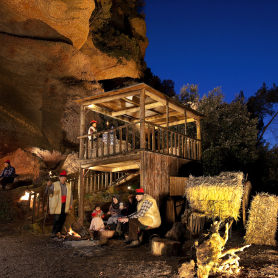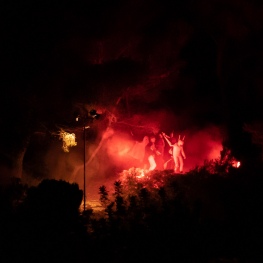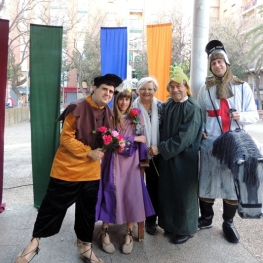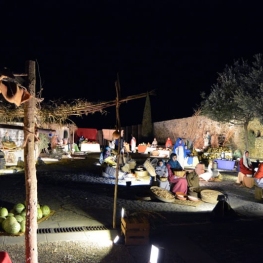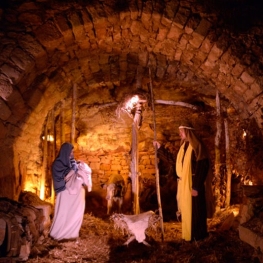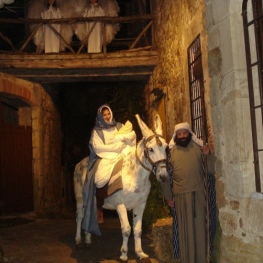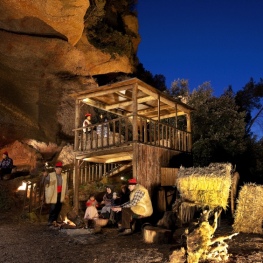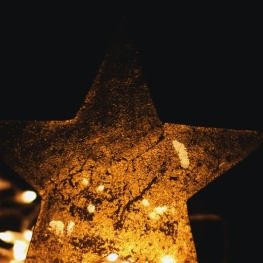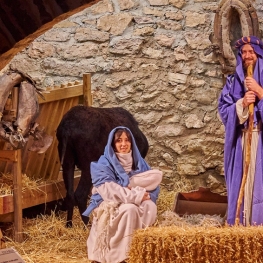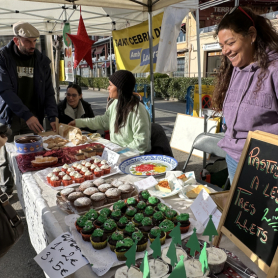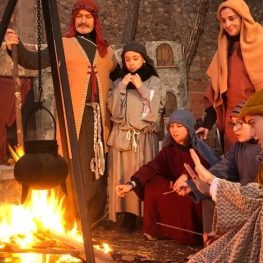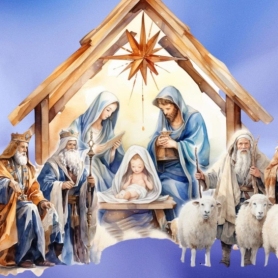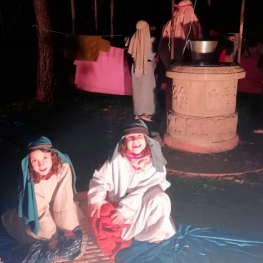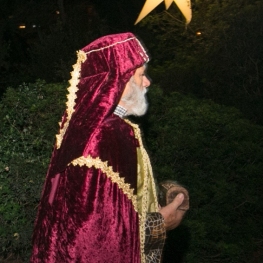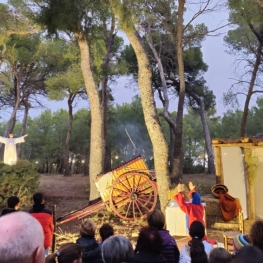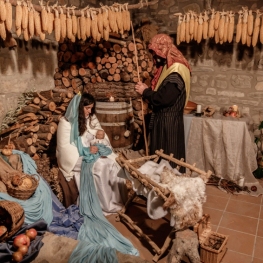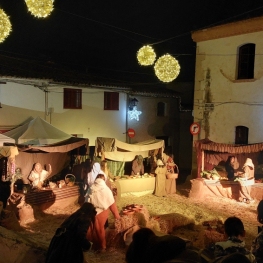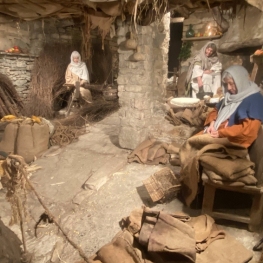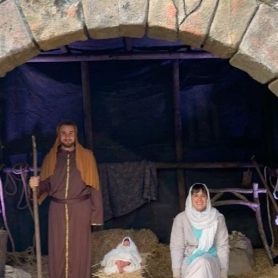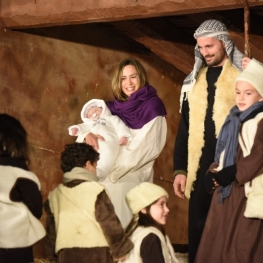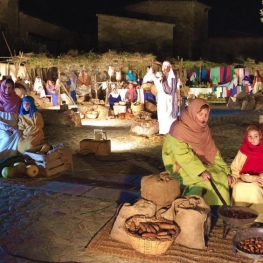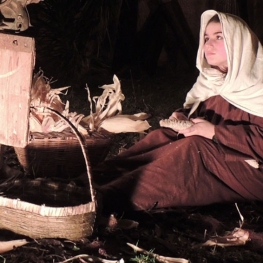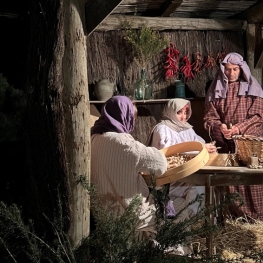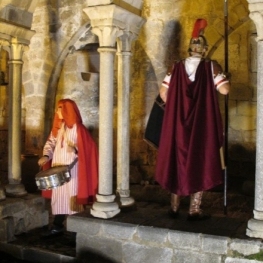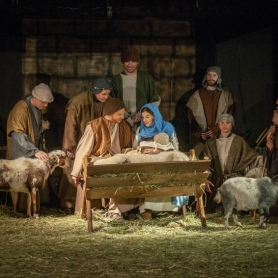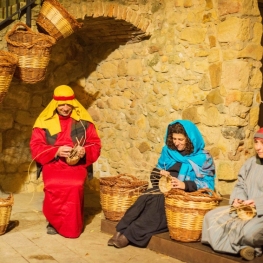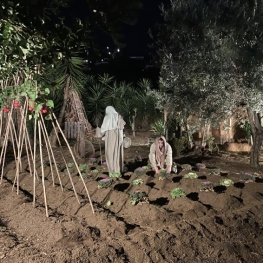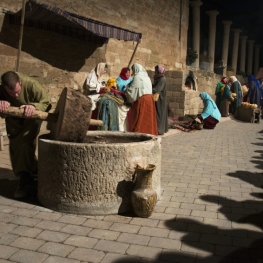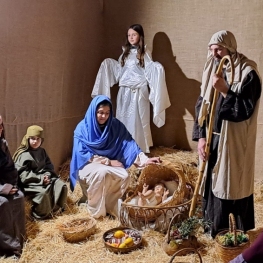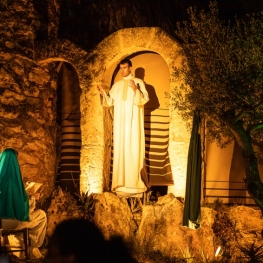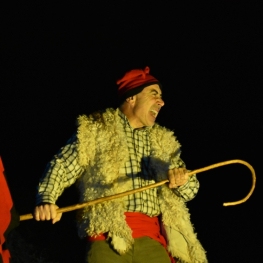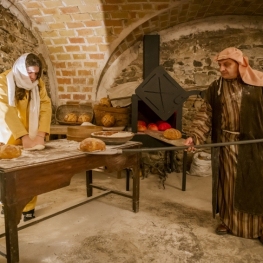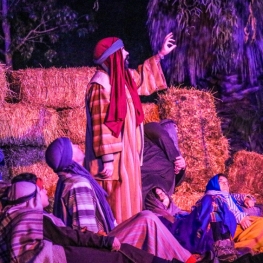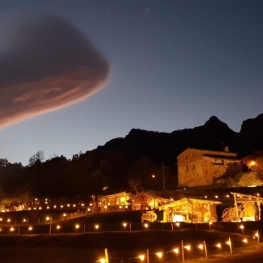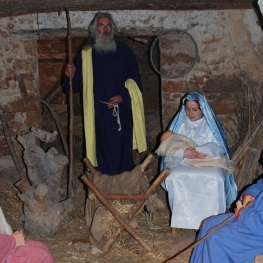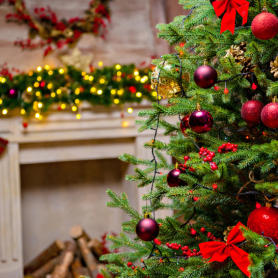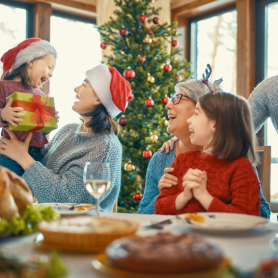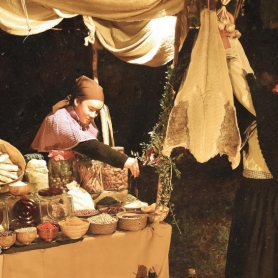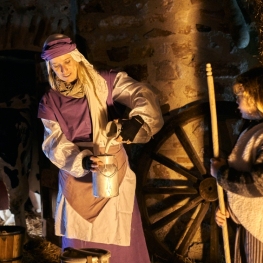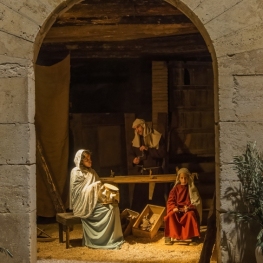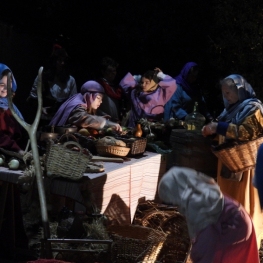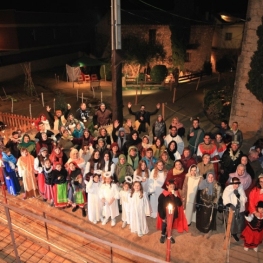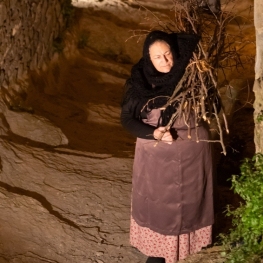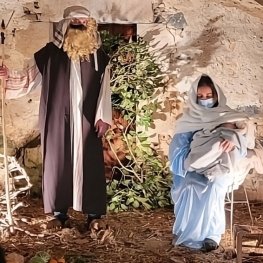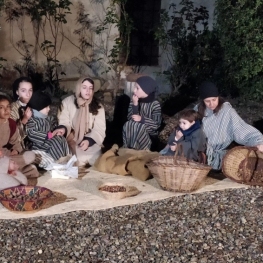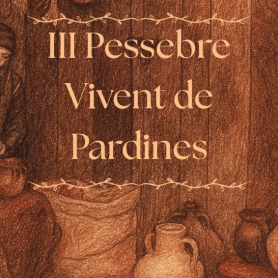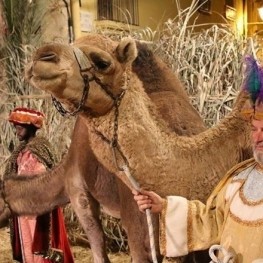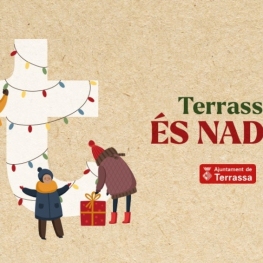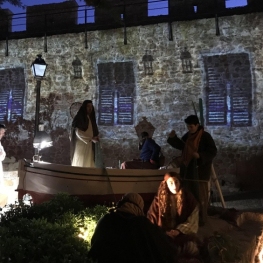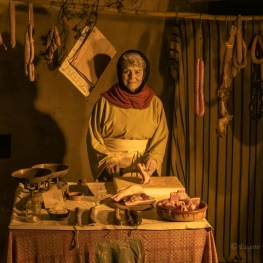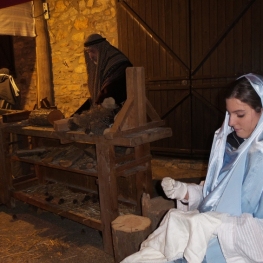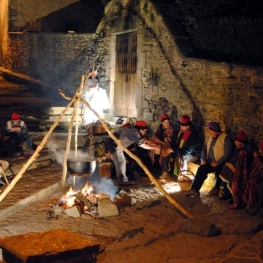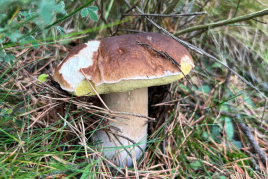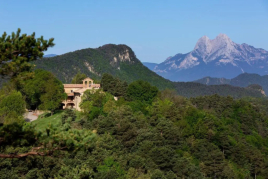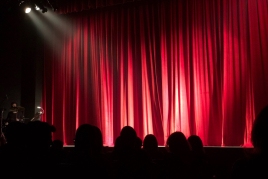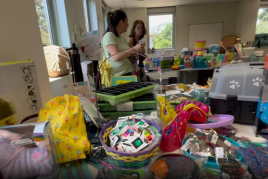Living Nativity Scenes in Catalonia 2025
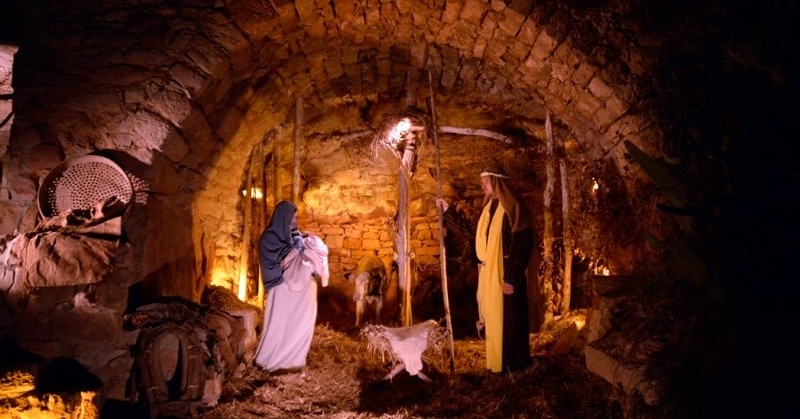
Towns, cities, and neighborhoods in Catalonia create authentic spectacles during the Christmas holidays with live nativity scenes.
The first documents in Catalonia that attest to the staging of live nativity scenes date back to the 14th century, but it wasn't until the late 1950s that they were transformed into the concept of the live nativity scene we know today.
In recent years, this Christmas tradition has become one of the must-do activities for families to enjoy, as visitors discover the picture-perfect outdoor reenactments of the birth of Christ. Visitors can walk through the scene and interact with the actors.
All Nativity scenes center on the birth in the stable. And they're always accompanied by endless reenactments about the arrival of Their Majesties the Three Wise Men, the daily life of the Catalan Offices and Shepherds, the flight to Egypt, the Romans, and, above all, a good Caganer.
The performances are distinctive and unique to each town and city, as the heritage of each location is taken into account when creating the live nativity scene. Thus, we can find the Nativity scene inside a natural cave, scenes of angels flying over cliffs, guided nativity scenes, others with period music and dances... the offering is rich and diverse.
When the streets begin to fill with lights, magic, and glitter , it's time to enjoy the Living Nativity Scenes throughout Catalonia.
When does Christmas fall in 2025?
Different representations of each Living Nativity scene are held, the dates of which vary depending on the Christmas Holidays.
The most important Christmas holidays in Catalonia are:
Caga Tió, where children hit a log with sticks while singing songs to make the Tío "poop" sweets and gifts.
It's a tradition that fills homes with laughter, excitement, and the Christmas spirit. Families often gather to share a hearty dinner, often based on traditional dishes like escudella and carne de olla.
Christmas Day is at the heart of the Christmas celebrations. Families gather to enjoy a festive meal that often includes " escudella con galets" and a roast chicken or stuffed bonnet, accompanied by nougat and wafers. It is a day dedicated to sharing special moments with loved ones, exchanging gifts and keeping deep-rooted traditions alive.
St. Stephen 's Day, exclusive to Catalonia, is a much-loved day that offers the opportunity to continue sharing moments with the family. The quintessential dish for this day is cannelloni, which is traditionally made with leftovers from the previous day's roast. This day symbolizes the continuity of the Christmas celebrations and allows the festive spirit to continue.
New Year's Eve (Wednesday, December 31, 2025)
New Year's Eve is the last big party of the year. Families and friends gather to say goodbye to the old year and welcome in the new with large dinners, champagne toasts, and the traditional twelve grains of grape, which are eaten to the rhythm of the midnight chimes to bring luck for the following twelve months. The party continues with dancing, music, and celebrations until the early hours.
New Year's Day, is characterized by being a day of rest and reflection. After the previous night's celebration, families take this day in stride, having a more relaxed meal. It's a time to recharge and start the year with renewed resolve and good energy.
Three Kings' Parade (Monday, January 5, 2026)
The eve of Three Kings' Day is one of the most eagerly awaited days for children. The Three Kings' Parade, filled with lights, music, and spectacle, fills the streets of every Catalan municipality with the arrival of Melchior, Gaspar, and Balthazar. Children eagerly await the moment to see the floats parade, throw cards with their wishes, and collect candy as the anticipation grows.
Three Kings' Day (Tuesday, January 6, 2026)
Three Kings' Day brings the Christmas festivities to a close. After the magical night in which the Three Wise Men left gifts in homes, families gather to eat the traditional Roscón de Reyes (King's Cake ), which hides a bean and a figurine. Whoever finds the figurine is crowned king of the festival, while whoever finds the bean must pay for the following year's Roscón. This day brings the festive season to a joyful close, until the following year.
Featured
Pessebre Vivent de Sant Fost
Sant Fost de CampsentellesThe village of Sant Fost de Campsentelles located in vallesano hillside where…
Pessebre Vivent de Jesús
TortosaLiving nativity scene represented in movement and voice, from the Catalan era…
Pessebre Vivent de Corbera
Corbera de LlobregatThe Living Nativity Scene of Corbera de Llobregat is a live representation…
Pessebre Vivent Pobla de Montornès
La Pobla de MontornèsA living nativity scene is a representation of the birth of Jesus…
Calaix de Sastre
Sant Feliu de LlobregatThe Calaix Sastre Cultural Association is a non-profit organization that was born…
Federació Pessebres Vivents de Catalunya
TonaThe Federation of Living Nativity Scenes of Catalonia is a non-profit cultural…
Pessebre Vivent de Les Torres de Fals
FonollosaThe visit to the Nativity scene concludes among shepherds, who offer a…
Related events
Living nativity scene of the Estels de Masia de Castelló in…
13/12/2025 - 14/12/2025Vandellòs i l'Hospitalet de l'Infant

